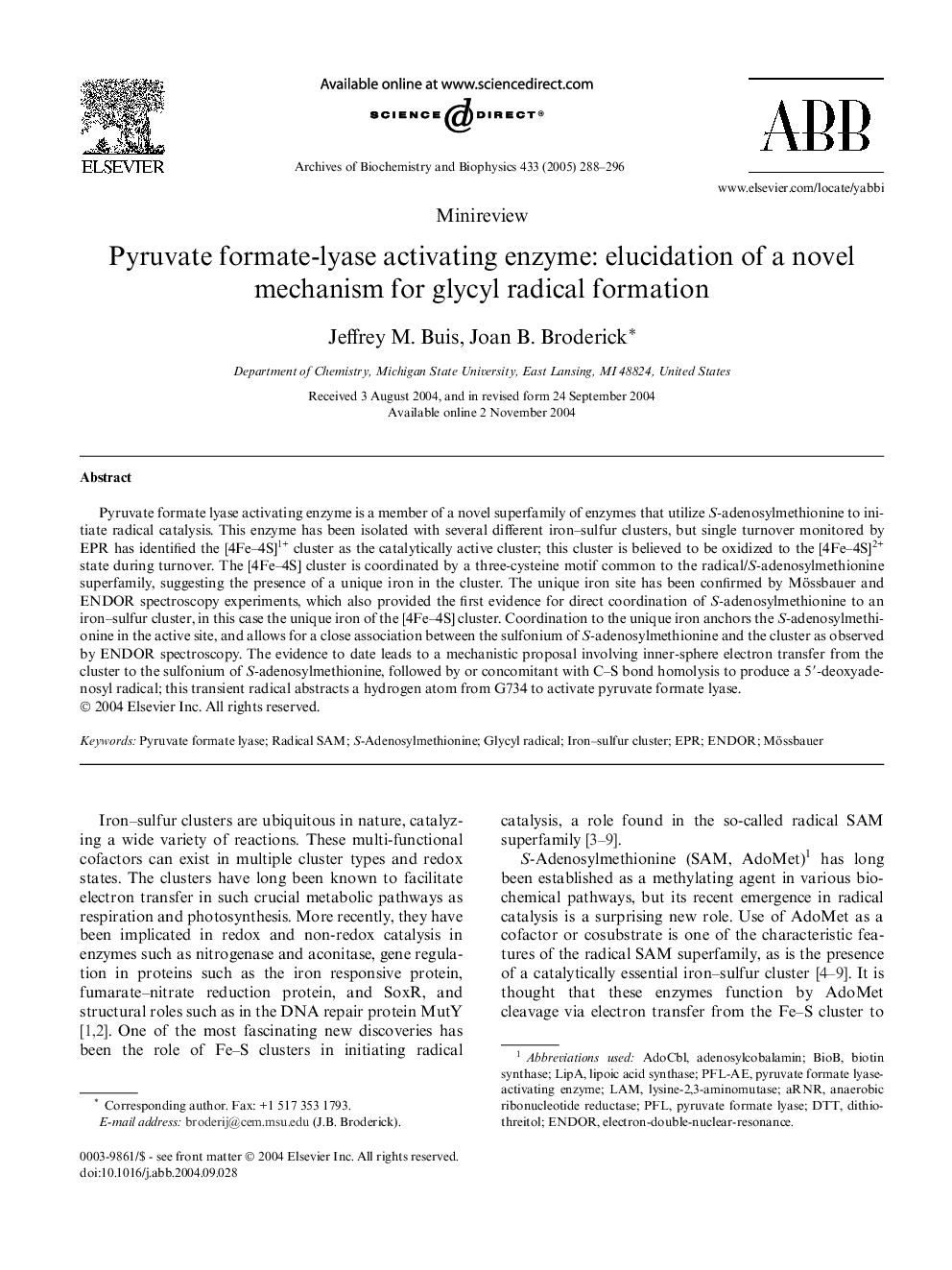| Article ID | Journal | Published Year | Pages | File Type |
|---|---|---|---|---|
| 9882428 | Archives of Biochemistry and Biophysics | 2005 | 9 Pages |
Abstract
Pyruvate formate lyase activating enzyme is a member of a novel superfamily of enzymes that utilize S-adenosylmethionine to initiate radical catalysis. This enzyme has been isolated with several different iron-sulfur clusters, but single turnover monitored by EPR has identified the [4Fe-4S]1+ cluster as the catalytically active cluster; this cluster is believed to be oxidized to the [4Fe-4S]2+ state during turnover. The [4Fe-4S] cluster is coordinated by a three-cysteine motif common to the radical/S-adenosylmethionine superfamily, suggesting the presence of a unique iron in the cluster. The unique iron site has been confirmed by Mössbauer and ENDOR spectroscopy experiments, which also provided the first evidence for direct coordination of S-adenosylmethionine to an iron-sulfur cluster, in this case the unique iron of the [4Fe-4S] cluster. Coordination to the unique iron anchors the S-adenosylmethionine in the active site, and allows for a close association between the sulfonium of S-adenosylmethionine and the cluster as observed by ENDOR spectroscopy. The evidence to date leads to a mechanistic proposal involving inner-sphere electron transfer from the cluster to the sulfonium of S-adenosylmethionine, followed by or concomitant with C-S bond homolysis to produce a 5â²-deoxyadenosyl radical; this transient radical abstracts a hydrogen atom from G734 to activate pyruvate formate lyase.
Keywords
Related Topics
Life Sciences
Biochemistry, Genetics and Molecular Biology
Biochemistry
Authors
Jeffrey M. Buis, Joan B. Broderick,
